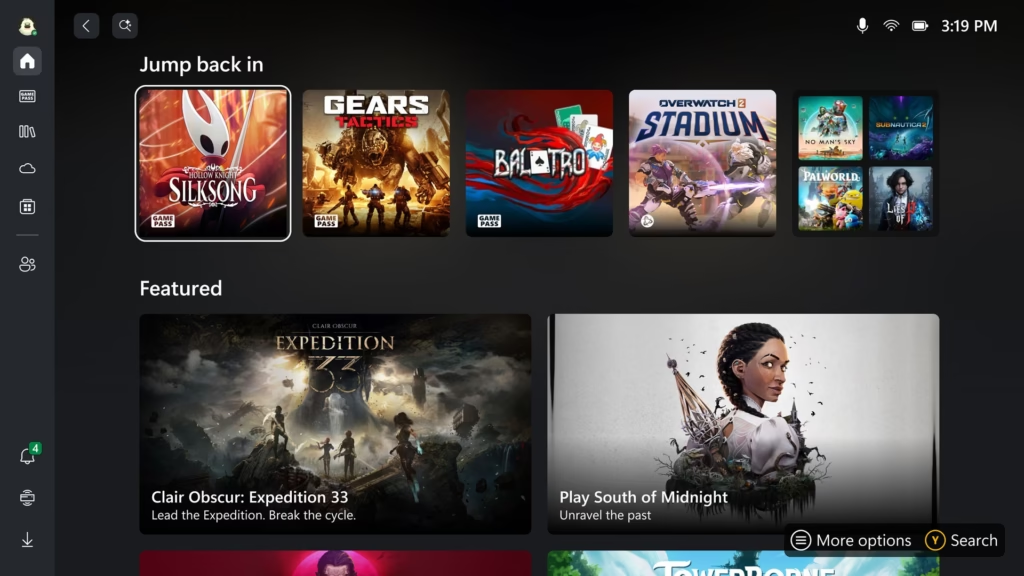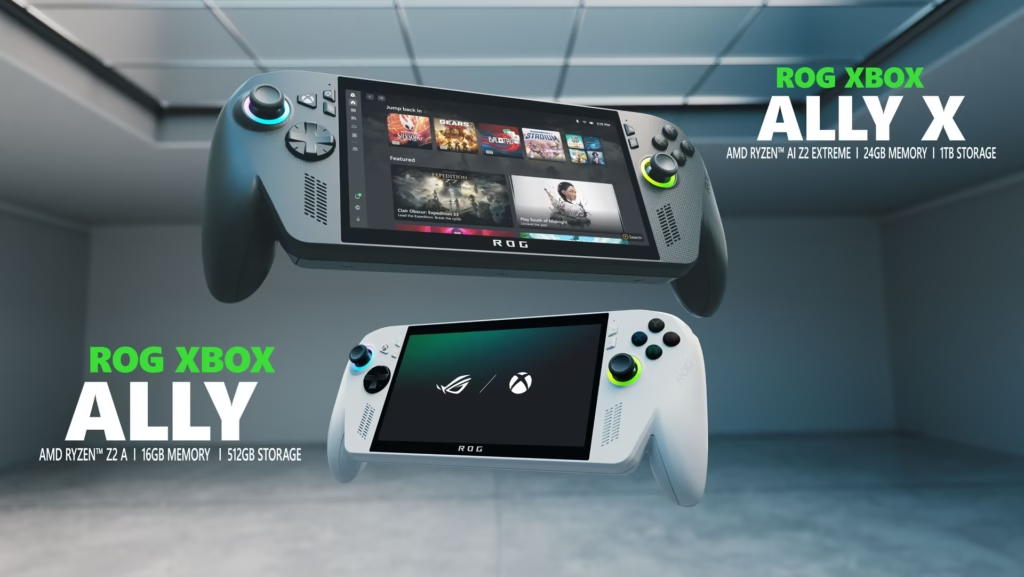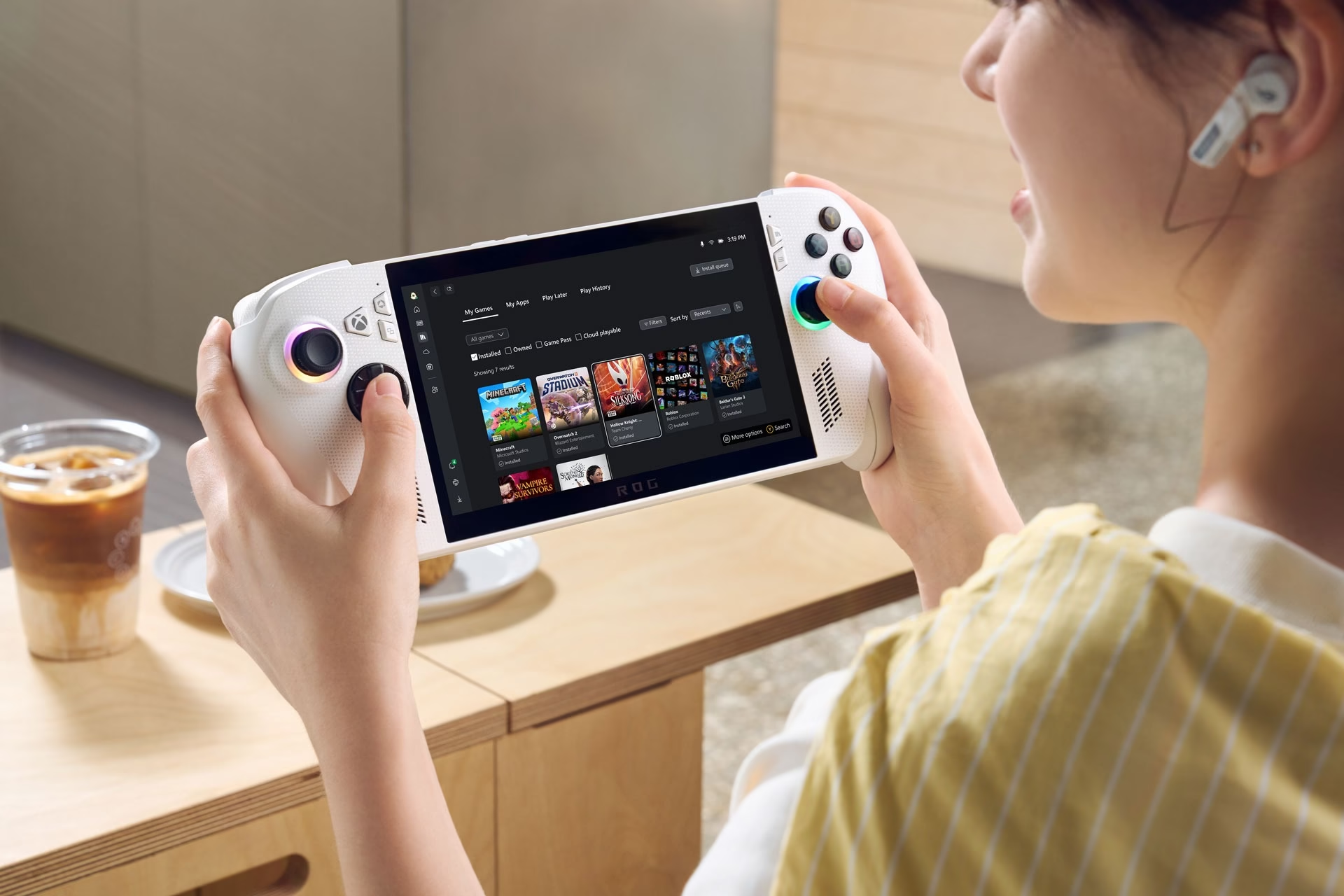Microsoft announced a couple of handheld gaming devices at the Xbox Gaming Showcase on June 9: ROG Xbox Ally and the ROG Xbox Ally X. On the surface, these seem like generational “upgrades” to the original Ally — with one featuring a faster processor and the other a slower one, but we’ll get to that later, and it’s also largely irrelevant.
What is relevant is the Xbox branding — a first — and more importantly, a brand new, Xbox-ified edition of Windows that the two Allys are running.
Windows sucks
The first time I tried a PC gaming handheld — a Lenovo Legion Go — I hated it. The device itself was great, what I didn’t like was the experience of gaming on the device. Coming from a Switch, I expected a clean, controller-friendly UI, pause-wake for the OS and a resume function for games, and decent battery life. What I instead had to deal with was a mouse-friendly Windows 11 desktop that I had to navigate with joysticks and analogue triggers, a sleep-wake function that never worked, a non-existent resume function, and horrible battery life.
On top of that, the device would overheat just running Windows, performance was all over the place, and don’t even get me started on connection issues, bugs, and compatibility problems with third-party overlays.
YouTuber Dave2D aptly demonstrates the primary issue – performance – in a video where he pits a SteamOS-powered Legion Go against a Windows-powered one. SteamOS is a Linux-based operating system that Valve – the creators of Half-Life and the Steam store – heavily modified to deliver that handheld PC gaming experience we all deserve. The TL;DW of Dave’s video is that the Linux-powered Go was up to 15% faster than the Windows one, delivering nearly twice the battery life while offering a markedly better handheld gaming experience.
Xbox-ified Windows to the rescue?

The Windows version running on the Xbox Ally models is a stripped-down Windows 11. The Xbox app is now front and centre, re-designed to be controller-friendly, and acts as an aggregator for all the PC games you have installed on the device. Launchers from EA, Epic Games, Ubisoft and more are supported, and those that are not could potentially be accessible from a traditional desktop UI.
Speaking of the desktop, it’s gone, or rather, it’s disabled until it’s needed. The desktop, file explorer, and just about every service that’s not needed for gaming has been disabled by default. In total these changes have apparently brought down Windows 11’s system requirements by 2 GB and de-bloated the OS to such an extent that Windows should now be more competitive with SteamOS. In addition, the Xbox team now has access to core Windows functions and can implement optimisations at an OS level.
I, for one, am particularly excited about this update because I’ve been hunting for a good, controller-friendly UI that I can use on my HTPC for light gaming.
ROG Ally and ROG Ally X specs

Coming to the devices themselves, Microsoft has announced that the devices will be arriving Holiday 2025, which translates to Oct-Nov 2025 or thereabouts. India isn’t in the launch lineup, though, and there’s still no confirmation on price.
The two Ally’s specifications seem OK at first glance, but are much shadier when you dig deeper.
First, both devices are powered by seemingly newer processors: A Ryzen Z2A in the case of the Ally, and a Ryzen AI Z2 Extreme in the case of the Ally X. The previous Ally was powered by a Z1 Extreme.
This might sound like an upgrade — 2 comes after 1, after all — but it’s not. The Z2 Extreme is a minor upgrade while the Z2 A is a massive step down and on par with the 2022 Steam Deck. The Z2 A is based on a six-year old CPU architecture (Zen 2) and a five-year old GPU architecture (RDNA 2). It’s old, slow, and inefficient, and if you thought the Steam Deck was running out of Steam, the ROG Xbox Ally isn’t even available for purchase yet.
The X has better haptics for its controllers, faster RAM, more RAM, more storage, support for 40 Gbps Thunderbolt 4 and thus external GPUs (the Z2A Ally only has 10 Gbps USB-C 3.2 Gen 2), and a much larger battery.
Another, perhaps bigger issue, is that neither the Z2 A nor the Z2 Extreme has support for AMD’s latest, AI-powered FSR4 upscaler. This will limit the performance one can extract from the two Allys and essentially leaves us with one device that’s on par with the Steam Deck and one that is perhaps slightly faster than it’s predecessor.
Assuming the Xbox-ification of Windows works, this could change for the better. For Microsoft to have any stake in the future of handheld PC gaming, this had better be the case.
| Model | ROG Xbox Ally | ROG Xbox Ally X | Steam Deck |
|---|---|---|---|
| Release date | Holiday 2025 | Holiday 2025 | February 2022 |
| CPU | Ryzen Z2 A | Ryzen Z2 Extreme | Custom APU |
| Architecture | Zen 2 | Zen 5 | Zen 2 |
| Cores/Threads | 4/8 | 8/16 | 4/8 |
| GPU | 8-core RDNA 2 | 16-core RDNA 3.5 | 8-core RDNA 2 |
| TDP | 6-20W | 15-35W | 4-15W |
| RAM | 16GB (6400) | 24GB (8000) | 16GB (6400) |
| Storage | 512GB | 1TB | 0.5-1TB |
| Display size | 7″ | 7″ | 7.4″ |
| Resolution | 1920×1080 | 1920×1080 | 1280×800 |
| Technology | IPS | IPS | OLED |
| Refresh rate | 120Hz | 120Hz | 90Hz |
| Battery | 60Wh | 90Wh | 50Wh |
The ball’s in your court now, Microsoft.


